Europe
Continent on Earth
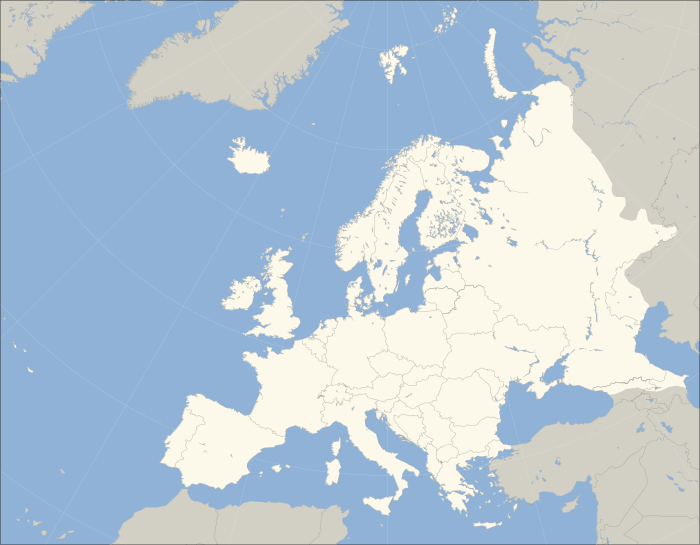
Introduction
Europe is a continent entirely in the Northern Hemisphere and mostly in the Eastern Hemisphere, commonly defined by a combination of natural geographical boundaries. To the north, it is bordered by the Arctic Ocean; to the west by the Atlantic Ocean; and to the south by the Mediterranean Sea. The conventional eastern boundary with Asia follows the Ural Mountains, the Ural River, and the Caspian Sea; further south, the separation continues along the Caucasus Mountains, the Black Sea, and the Bosporus Strait.
Europe shares its landmass with Asia as part of Eurasia, and with both Asia and Africa as part of Afro-Eurasia. Today, the European Union (EU), a supranational political entity, includes most European countries, with shared features like the euro, single market and Schengen Area, forming one of the world’s largest economies.
| Area (km² / sq mi) | 10,186,000 / 3,933,000 |
| Population | 745,173,774 (2021) |
History of Europe
Throughout the long Pleistocene era, Europe experienced repeated glaciations, with alternating cold and warmer intervals shaping both the landscape and the movement of early human groups. Among the earliest humans in Europe were Homo erectus georgicus, appearing nearly 1.8 million years ago in Georgia, followed by Neanderthals, who roamed much of the continent until vanishing around 40,000 years ago. Modern Homo sapiens entered the scene at least 48,000 years ago, as shown by archaeological finds in Italy, Germany, and France. As the Neolithic age took hold around 7000 BCE—spreading from the Balkans and Greece—Europe saw the emergence of agriculture, permanent settlements, and ceramics.
Distinct cultures such as the Linear Pottery and Cardial cultures began shaping early European society, and over time these communities developed skills in metalworking, evident in the production of copper artifacts and the building of megalithic structures like Stonehenge. By the Bronze Age, starting in Crete around 3200 BCE with the Minoans, three key ancestral groups had shaped Europe: hunter-gatherers from the Epigravettian culture, Anatolian farmers, and Yamnaya herders from the steppe. The subsequent Iron Age was marked by new city-states and Greek and Phoenician colonization, culminating in what is considered Classical Antiquity, beginning with the first Olympic Games in 776 BCE.
Ancient Greece laid the foundation for Western civilisation, developing forms of democracy, philosophy, and science that would deeply influence future societies. The polis, or city-state, dominated the Greek political landscape, with Athens establishing a pioneering democratic system in 508 BCE. Key Greek thinkers—Plato, Aristotle, and Hippocrates—shaped various disciplines, while military resistance against the Persians marked the Golden Age of Athens, a fertile period for arts and culture.
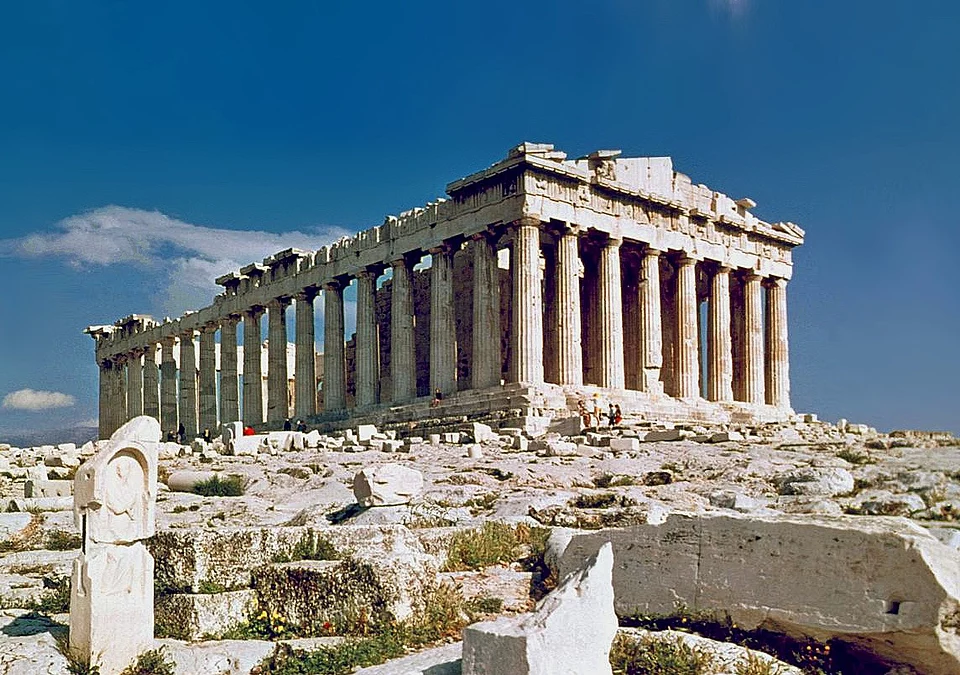
Greece’s influence was followed by that of Rome, whose expansion brought law, engineering, and Latin across Europe. From central Italy, the Romans extended their reach, forming a vast empire by the first century BCE. Under Augustus, the Republic transitioned into the Empire, ushering in the pax romana, a long stretch of stability. In 313 CE, Christianity gained legal status under Constantine, who moved the capital to Constantinople. By the late 4th century, Christianity had become the official state religion, while paganism was suppressed.
Despite later decline in the West, the Byzantine Empire preserved Roman heritage and remained a major power. As new forces like Islamic caliphates emerged and conquered parts of the former Roman world, Europe entered the Early Middle Ages, an era shaped by migrations, monastic scholarship, and shifting powers, setting the stage for medieval Europe.
The Renaissance, beginning in 14th-century Florence, marked a profound cultural rebirth across Europe that revived classical Greek and Arabic knowledge, often rediscovered from monastic archives and translated into Latin. This era saw an extraordinary outpouring of achievements in art, science, philosophy, and music, heavily supported by influential patrons like the Medici family and the Catholic Church. Meanwhile, political instability shook the Catholic Church, notably during the Western Schism, when rival popes contested authority.
The 15th century also ushered in the Age of Discovery, led by maritime powers Spain and Portugal, who explored new territories across the Atlantic, Africa, and Asia. Landmark voyages by explorers such as Columbus, da Gama, and Magellan expanded European influence globally, leading to vast colonial empires. However, the Church’s grip weakened further with the onset of the Reformation initiated by Martin Luther’s 1517 theses, which fractured religious unity and provoked widespread conflict, including the devastating Thirty Years’ War. By the late 17th century, with the rise of France and the defeat of the Ottomans at Vienna, Europe’s political and religious landscapes had been dramatically transformed.
The 18th and 19th centuries brought about sweeping changes fueled by the Enlightenment’s emphasis on reason and science, sparking political upheavals such as the French Revolution and the rise of Napoleon Bonaparte, whose conquests spread revolutionary ideals across Europe. The Congress of Vienna later established a delicate balance of power among major states that persisted until the mid-19th century revolutions. Simultaneously, the decline of the Ottoman Empire prompted nationalistic movements in the Balkans, reshaping regional borders.
The Industrial Revolution, originating in Britain, revolutionized production methods, urbanization, and society, causing population growth and migration on an unprecedented scale. By the early 20th century, Europe had undergone rapid modernization but also faced rising tensions that erupted into two world wars, the first triggered by the assassination of Archduke Franz Ferdinand. The aftermath of these conflicts saw the collapse of empires, the rise of communism in Russia, and significant geopolitical realignments, setting the stage for the modern era.
Geografy of Europe
Europe occupies the western portion of the Eurasian landmass and features the highest coastline-to-land ratio among continents. It is bordered by the Arctic Ocean to the north, the Atlantic Ocean to the west, and the Mediterranean, Black, and Caspian Seas to the south. The continent’s landscape is highly varied despite its size: southern Europe is dominated by mountain ranges like the Alps and Pyrenees, while northern Europe consists mostly of vast plains, including the Great European Plain centered on the North German Plain. Additionally, an upland arc runs along the northwestern coast, spanning parts of Britain, Ireland, and Norway.
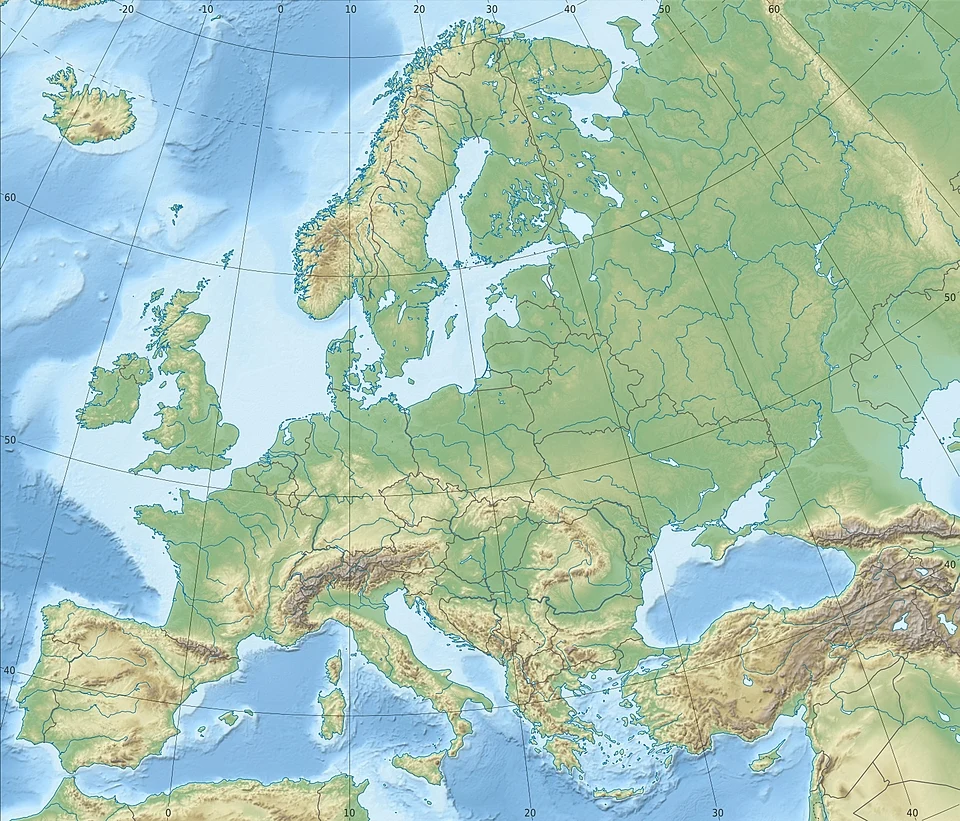
Europe’s climate is predominantly temperate, heavily influenced by the Gulf Stream, which carries warm Atlantic waters that moderate temperatures across the continent. This current makes Europe’s weather milder and wetter than other regions at similar latitudes, such as North America and Siberia. The Mediterranean Sea also plays a role by equalizing temperatures in southern Europe. Generally, the climate cools from south to north and from west to east, with western Europe experiencing more oceanic conditions compared to the drier eastern regions.
The continent’s natural vegetation is mainly mixed forests, which thrive under favorable growing conditions supported by the Gulf Stream and varied mountain geography. Historically, much of Europe was forested, but centuries of deforestation have reduced these areas significantly. Today, forests cover about a quarter of Europe’s land, with extensive conifer plantations replacing original mixed forests in some regions. The forest types vary widely, from broadleaf and mixed forests in central Europe to taiga and tundra in the north, and scrub forests and olive groves in the Mediterranean basin.
Europe’s animal life has been heavily shaped by human activity and climatic changes. Many large predators like wolves and bears have been pushed to the margins, now mainly inhabiting remote forests and mountains in the Balkans, Scandinavia, and Russia. Some species, such as the European bison, survive only in protected reserves. Smaller mammals, birds, reptiles, and insects contribute to the biodiversity, along with marine life including phytoplankton, fish, dolphins, and whales. Biodiversity protection efforts in Europe are coordinated through international agreements like the Bern Convention.
Culture of Europe
Europe’s cultural identity is deeply rooted in the fusion of various traditions and influences that have shaped its evolution over centuries. The Renaissance, for example, marked a major cultural movement that spanned across the continent, blending classical ideas from ancient Greece and Rome with contemporary artistic and intellectual developments. This period witnessed the flourishing of arts, sciences, and philosophy, with cities such as Florence, Venice, and Paris becoming centers of innovation.
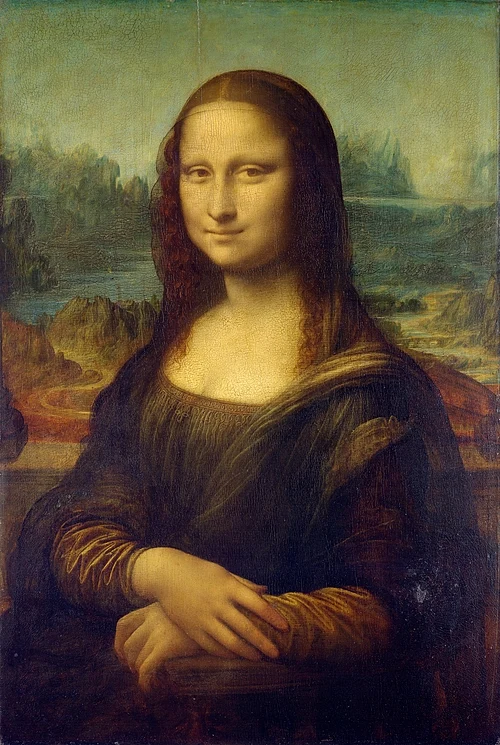
Moreover, the Enlightenment brought forward ideas that challenged traditional authorities and promoted individual rights and scientific reasoning, which would later influence European political and social structures. As Europe continued to evolve, its cultural mosaic grew even more complex through the expansion of empires, trade, and migration, bringing diverse languages, religions, and customs into constant interaction.
Cuisine of Europe
European cuisine, often referred to as Continental cuisine, encompasses the traditional culinary styles found across the many countries of Europe. Despite the wide variety of regional dishes, there are certain shared traits that distinguish European cooking from other global food traditions. Unlike many East Asian cuisines, meat tends to be a more dominant and generous part of the meal. The use of dairy products is also extensive, with a vast array of cheeses and other fermented milk-based items being common staples. Historically, the majority of people consumed different kinds of bread—mainly made from grains such as rye, spelt, barley, and oats—while wealthier individuals had access to more refined foods like pasta, dumplings, and pastries.
The introduction of the potato greatly influenced the European diet after the discovery of the Americas, becoming one of the key sources of carbohydrates. While corn is less prevalent in most European meals compared to the Americas, it remains important in dishes such as polenta in Italy and certain Balkan countries. Although flatbreads topped with ingredients, like pizza or tarte flambée, and rice are consumed, they serve as staples mainly in southern regions. Additionally, salads featuring raw or cooked vegetables, sometimes accompanied by dressings, play an important role in European cuisine.
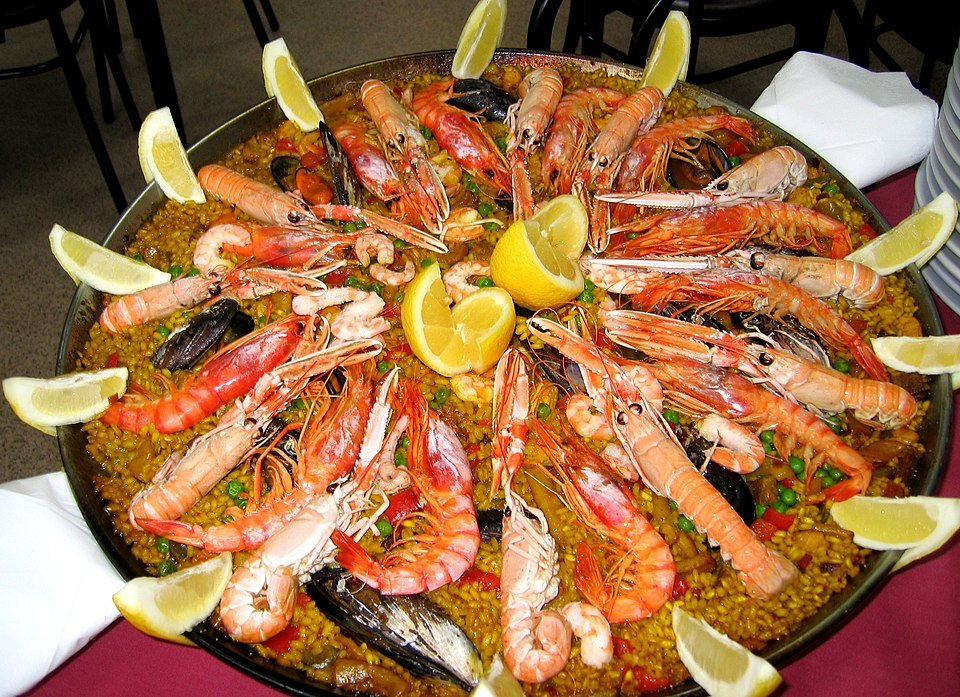
Traditional European dining is structured around distinct courses served one after the other. The earlier French custom, service à la française, involved placing many dishes on the table simultaneously, but this evolved into service à la russe, where food is presented sequentially. Meals typically start with cold starters or soups, followed by hot savory dishes for the main course, and conclude with a sweet dessert. While the combination of sweet and savory flavors was common in ancient Roman cooking, nowadays sweets are generally reserved for the final course. A buffet style, where guests serve themselves, is usually limited to festive events, but even then, the usual order of eating is observed.
The roots of European cuisine are closely tied to the dining habits of royalty and the nobility, who often lived in rural estates and carried weapons. The knife was the primary eating utensil, suitable for cutting substantial portions such as steaks. This contrasts with East Asian traditions, where rulers were often officials who ate food already prepared in bite-sized pieces with chopsticks. Over time, the spoon gained popularity for eating soups, and the fork was gradually adopted starting in the 16th century during the early modern era. Nowadays, the use of cutlery is standard for most European meals, with only a few finger foods considered acceptable to eat by hand in formal settings.
Geo-cultural divisions
There are many ways to divide Europe from a geographical and cultural perspective, depending on historical, linguistic, religious, or political criteria. Some divisions emphasize East and West, others focus on North and South, and still others consider cultural-linguistic families such as Romance, Slavic, and Germanic. For the purposes of this article, we have chosen the division that best reflects cultural identity and historical development across the continent, offering a clearer and more meaningful framework for understanding Europe’s internal diversity. This leads us to the following classification of European geo-cultural regions:
- Alpine region
- Balkan or Greco-Balkan region
- Baltic region
- Benelux region
- British or British Isles region
- Carpatho-Danubian or Central-Eastern region
- French region
- Germanic region
- Iberian region
- Italian region
- Nordic or Finno-Scandinavian region
- Sarmatian region
Political divisions
Politically, Europe is divided into nations, each with its own government, territory, and political identity. However, not all countries are part of Europe in the same way.
Indeed, some countries are located entirely within Europe, while others are transcontinental, meaning they span both Europe and Asia. This situation arises from geographical, historical, or administrative factors, as seen in states which extend over both continents. Because of this dual classification, we have decided to separate countries that are fully European from those that are only partly European. Here is how we have grouped them:
Countries located entirely in Europe:
- Albania 🇦🇱
- Andorra 🇦🇩
- Austria 🇦🇹
- Belarus 🇧🇾
- Belgium 🇧🇪
- Bosnia and Herzegovina 🇧🇦
- Bulgaria 🇧🇬
- Croatia 🇭🇷
- Cyprus 🇨🇾
- Czech Republic 🇨🇿
- Denmark 🇩🇰
- Estonia 🇪🇪
- Finland 🇫🇮
- France 🇫🇷
- Germany 🇩🇪
- Greece 🇬🇷
- Hungary 🇭🇺
- Iceland 🇮🇸
- Ireland 🇮🇪
- Italy 🇮🇹
- Latvia 🇱🇻
- Liechtenstein 🇱🇮
- Lithuania 🇱🇹
- Luxembourg 🇱🇺
- Malta 🇲🇹
- Moldova 🇲🇩
- Monaco 🇲🇨
- Montenegro 🇲🇪
- Netherlands 🇳🇱
- North Macedonia 🇲🇰
- Norway 🇳🇴
- Poland 🇵🇱
- Portugal 🇵🇹
- Romania 🇷🇴
- Russia 🇷🇺
- San Marino 🇸🇲
- Serbia 🇷🇸
- Slovakia 🇸🇰
- Slovenia 🇸🇮
- Spain 🇪🇸
- Sweden 🇸🇪
- Switzerland 🇨🇭
- Ukraine 🇺🇦
- United Kingdom 🇬🇧
- Vatican City 🇻🇦
Countries partially in Europe (transcontinental states):
- Armenia 🇦🇲
- Azerbaijan 🇦🇿
- Georgia 🇬🇪
- Kazakistan 🇰🇿
- Turkey 🇹🇷
Source(s):
https://en.wikipedia.org/wiki/Europe
https://en.wikipedia.org/wiki/European_cuisine
Photo(s):
1. Ssolbergj, CC BY-SA 3.0 https://creativecommons.org/licenses/by-sa/3.0, via Wikimedia Commons
2, Steve Swayne, CC BY 2.0 https://creativecommons.org/licenses/by/2.0, via Wikimedia Commons
3, Alexrk2, CC BY-SA 3.0 https://creativecommons.org/licenses/by-sa/3.0, via Wikimedia Commons
4. Leonardo da Vinci, Public domain, via Wikimedia Commons
5. Manuel Martín Vicente, CC BY 2.0 https://creativecommons.org/licenses/by/2.0, via Wikimedia Commons
